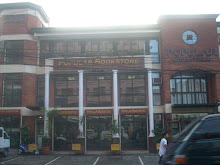The Roots is above all a Filipino story.
It begins as the story of our ancestors, their differentiation into Muslims and non-Muslim, and then the division of the non-Muslims into Christians and non-Christians. It tells of their separation for centuries, and then of how the natives, Chinese and Spanish mestizos, and even some full-blooded Spaniards born in Filipinas, united to form the Christian Filipino nation. It tells of the imperfect joining of Christians and Muslims during the American colonial regime, as distinguished for the vision of Rizal and Aguinaldo of a fraternal, all-archipelago union.
Thursday, August 26, 2010
Filipino Value System by F. Landa Jocano
This book is about the commonly shared and traditionally established system of values under lying Filipino behavior. This system forms only part of the larger Filipino cultural system. Thus, it is a subsystem. But,unless this subsystem is understood in its proper cultural context, it would be difficult to appreciate its influence on Filipino individual or group behavior.
Battle of Ising by Marie Silva Vallejo
Battle of Ising: The Untold Story of 130th Infantry Regiment in the Liberation of Davao and Mindanao by Marie Silva Vallejo.
From the Foreword. Philippine history is replete with Filipino heroes. This was especially more so during World War II when the Philippines was invaded by Japan. Many - or most - Filipino heroes, however, are unfortunately unknown to the present generation. Some medals and citations were awarded in the years just following World War II, and memorials and monuments were erected. Although memorial ceremonies were - and continue to be - held, the heroes usually remain in the background as other people take center stage. Thus, the really deserving men and women have faded into obscurity, lumped together in vague generalizations and cliches in speeches and books.
Furthermore, most of the histories of World War II in the Philippines have focused on Luzon. The battles fought on Luzon were, of course, important in the war effort, and in the wresting of the Philippines from the Japanese. But there were significant battles fought in the Visayas and Mindanao, battles which may be known in their immediate locality but not in the national consciousness.
From the Foreword. Philippine history is replete with Filipino heroes. This was especially more so during World War II when the Philippines was invaded by Japan. Many - or most - Filipino heroes, however, are unfortunately unknown to the present generation. Some medals and citations were awarded in the years just following World War II, and memorials and monuments were erected. Although memorial ceremonies were - and continue to be - held, the heroes usually remain in the background as other people take center stage. Thus, the really deserving men and women have faded into obscurity, lumped together in vague generalizations and cliches in speeches and books.
Furthermore, most of the histories of World War II in the Philippines have focused on Luzon. The battles fought on Luzon were, of course, important in the war effort, and in the wresting of the Philippines from the Japanese. But there were significant battles fought in the Visayas and Mindanao, battles which may be known in their immediate locality but not in the national consciousness.
Slavery in the Spanish Philippines by William Henry Scott
From the Introduction: Father Jose Arcilla's 1972 article on "Slavery, flogging and other moral cases in the 17th century" took many readers by surprise with its evidence of Filipino slavery as late as the 1680's. Even more surprising was the businesslike attention which a 17th century theologian could give to establishing a fair price. Arcilla cites a judgment by Dominican Fray Juan de Paz on the age at which a child slave could be considered an asset rather than a liability. "Eight taels for a twelve-year old boy is to me too little to make him a perpetual slave. In Manila, the price of a boy two or three years old is reckoned at thirty pesos more or less... Until he is eighteen or twenty years old, the service of a twelve-year old boy is of little value. One also has to consider the risk that he might die or fall sick and be of no use to the person who bought him."
Subscribe to:
Comments (Atom)




